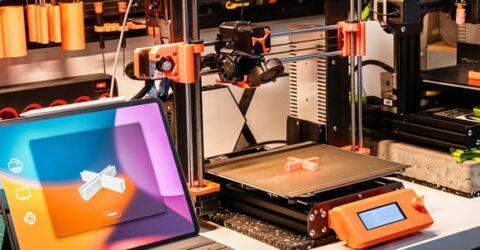When will 3D printers become the norm in every home?
Few of us own 3D printers, yet these remarkable machines can be incredibly useful around the home.

The 1980s was a pivotal decade in terms of technologies we take for granted today.
This was the era when home computers paved the way for the internet and when today’s immersive gaming experiences were first established.
In 1984 alone, printing was transformed beyond recognition.
This was the year when HP launched the first consumer laser printer, when breakthroughs were made with inkjet printing, and when the 3D printer was invented.
The latter has remained something of an unheralded marvel in this country.
In the Middle East, entire museums have been 3D printed, yet it remains a concept British consumers seem rather suspicious of.
However, today’s 3D printers aren’t just marvels of small-scale engineering. They can produce (and reproduce) innumerable useful items.
Such is their versatility that 3D printers might eventually become as ubiquitous around the home as smart speakers are today.
All the news that’s fit to print
Early 3D printers were expensive, bulky, complex and – in some cases – supplied with manuals dedicated to summer storage instructions.
We’ll spare you technical explanations of how stereolithography inspired a patent for fused deposition modelling.
Suffice it to say that a variety of companies now manufacture affordable 3D printers, primarily sold online.
While commercial operators have harnessed these machines in medical, construction and aviation-related guises, they offer numerous uses around the home as well:
Size and scale
While ingenious individuals have used 3D printers to manufacture everything from guitars to textured artworks, there are some limitations on what these consumer devices can produce.
Most domestic 3D printers have a maximum output size of ten inches cubed.
That’s fine for making customised bottle stoppers or monogrammed combs, but less well suited to furniture – unless you’re furnishing a doll’s house.
You’ll need advanced mechanical and engineering skills to turn 3D printed output into lightbulbs, motorised toys or anything else involving electricity.
The printers themselves vary in design. Some look like lava lamps, a few resemble coffee percolators, while others look like optometry equipment.
It costs a few hundred pounds to purchase a high-quality printer with an LCD interface, automatic bed levelling and high-speed fans to cool down freshly printed material.
The latter usually come from bottles of resin or spools of polyester filament known as PLA.
Both substances melt at low temperatures, bond strongly as each horizontal layer is printed on top of the layer below, and retain toughness once they’ve cooled and set.
These machines aren’t cheap to run, but then neither are traditional paper printers.
The sheer variety of potential output from 3D printers justifies far wider consumer adoption than we’ve seen to date.
Is it too early to suggest a 3D printer could be an ideal Christmas gift?






